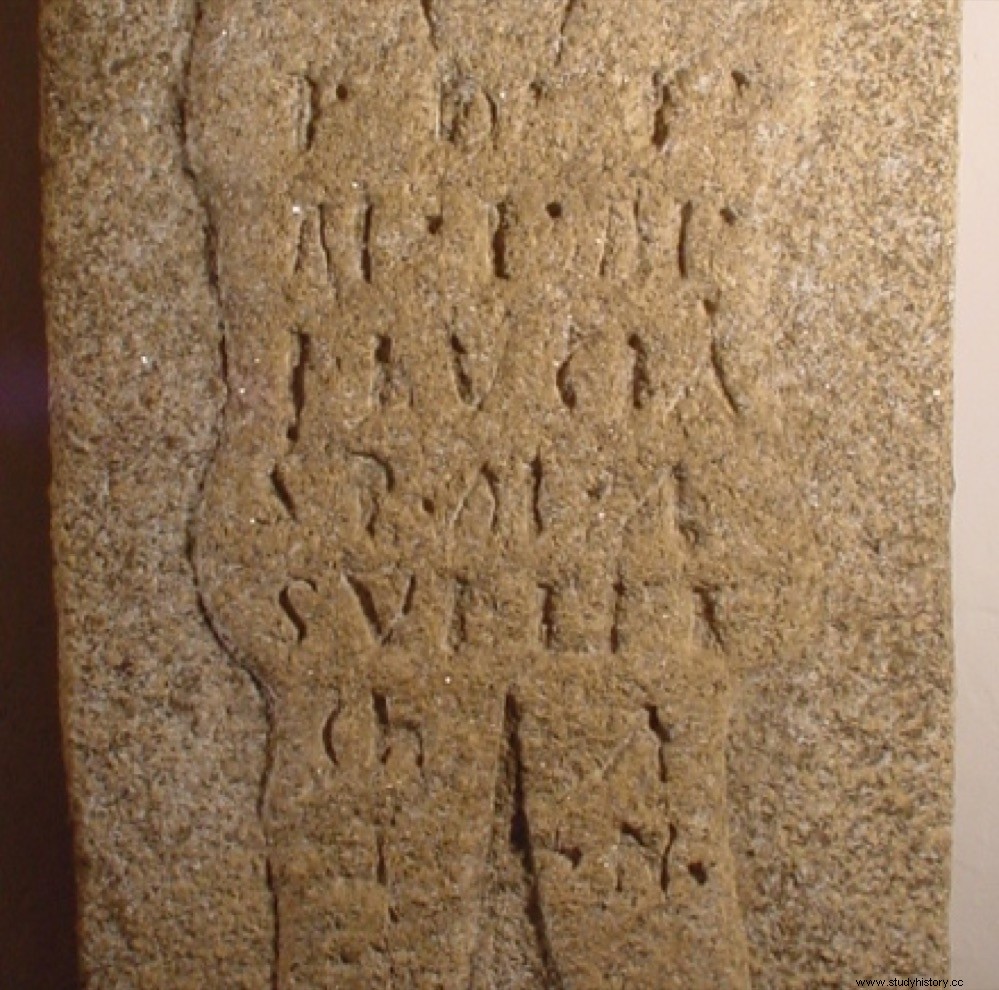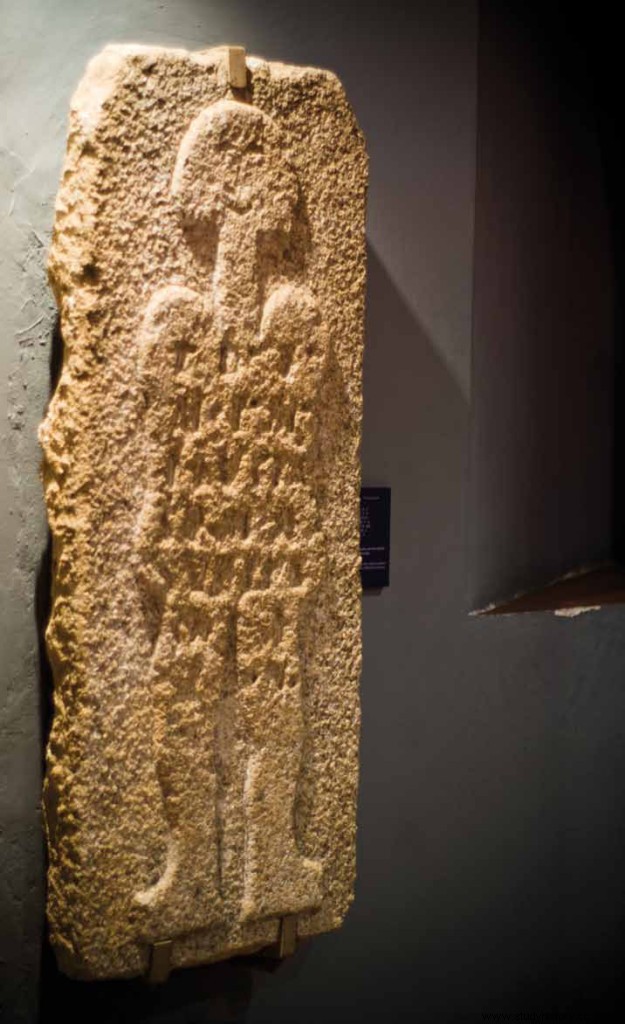Room 8 of the Cáceres Museum, dedicated to Roman epigraphy, exhibits a small part of the collection of inscriptions held by the institution. Among them stands out a stela from the town of Casar (the old Norba Caesarina) that bears an inscription that has not yet been deciphered. In addition, the figure represented in it is particularly interesting because it has the appearance of an astronaut or, according to some, an alien, which has given rise to numerous conjectures in the usual mystery circles and the popular imagination.
It is a granite tombstone 48 centimeters high by 17 wide and 1.12 thick in which a human-like figure is carved, with a certain disproportion between the parts, especially the head in which incipient eyes can be seen. smiling orientalizers. What is important about this stela is that the inscription is included within the body and legs of the figure, instead of being arranged around the image.
It was made known by Ricardo Hurtado de San Antonio (who was a professor of epigraphy at the Seminario Mayor de Cáceres) in 1976 through an article published in the Revista de Estudios Extremeños. In it he recounts how, while looking for information for his undergraduate report, news of the existence of such an artifact reached him:
Hurtado went to the Casar, finding the stela in the place they had indicated, the southwest wall of the local cemetery, where they had embedded it some 50 years ago after finding it in the ground of the cemetery. What caught his attention about the figure represented was its ingenuity, with notes of simplicity and childishness , although he recognized that it must have been carved by some stonemason who knew his trade .

The inscription is made up of deeply engraved letters , about 5 centimeters high, which due to its shape Hurtado ventured to date to the 1st century B.C. based on the fact that they denote a scarce Romanization, and indeed this would not begin in the area until the 1st century AD.
The reading of the inscription by Hurtado is as follows:
Other authors propose some variations, such as that of Callejo Serrano:

No one has been able to decipher what it says, although all the authors who have analyzed it agree on one thing, the characters on the inscription are Roman, but the language used is native to the area, that is, the Indo-European language spoken by the Lusitanians or by the Vetones. The only thing that has been made clear is the female name Ilucia , which has been found in other inscriptions in the area and which seems to have an Iberian root.
The two possibilities that Hurtado points out are either that it is a Celtic stela from the late Iron Age, around the 3rd-2nd century B.C. in honor of an indigenous funerary deity, whose representation would have Iberian influence and where the inscription would have been added later in Roman times; or that both the figure in relief and the inscription are from the same period and were made by the same person.
Hurtado leaned in his initial assessment towards this last possibility, in view of the indisputable coordination and unity between letters and figure and what Marcelo Vigil pointed out in his History of Spain published in 1973:

Despite the fact that many have wanted to see in the figure of this stela an accused resemblance to the so-called astronaut of the Nazca Lines, the truth is that you do not have to go so far to find similar representations. Valentín Soria Sánchez in his study Weapons in the Bronze Age in Extremadura published in 1983 gives an account of another tombstone found in Jarandilla (Cáceres):
Interestingly, the layout is similar to that of the figure on the Casar stela, with the feet on the side and the body facing forward. Soria Sánchez ends by saying:

This Jarandilla stela was privately owned and kept in a private house at the time Soria Sánchez wrote his article, so he could only publish a copy of the stela.
Finally, the cataloging of the Casar stela in Hispania epigraphica describes it as follows:
And José María Blázquez and Mª Paz García-Gelabert in Funeral symbols, bulls and portraits in ancient Hispania point out that the figure must represent either a deity from beyond the grave, or the deceased named Ilucia . What is certain is that the stele will continue to fascinate due to its strange and evocative relief, at least as long as what is written on it is not deciphered.
